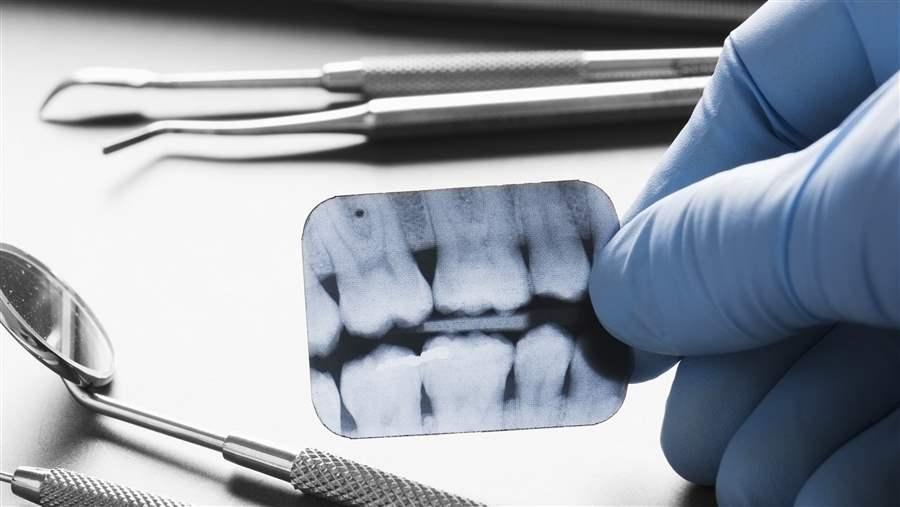Access to Dental Care Remains a Challenge for Millions of Michiganders
A fresh look at a 2015 study that detailed the state’s problems—and outlined policy solutions
In 2015, The Pew Charitable Trusts commissioned the State University of New York at Albany’s Center for Health Workforce Studies to conduct an independent, unbiased assessment of Michigan’s oral health programs, its dental access challenges, and the progress the state had made in addressing them. The center consulted with a research advisory panel made up of oral health experts from Michigan to ensure the report’s accuracy, objectivity, and comprehensiveness.
Since the center’s report was released in June 2015, stakeholders have developed a policy agenda based on its recommendations to improve access to dental care. As Michigan continues its work to ensure that all of its residents have access to appropriate dental care, there was a renewed need to share the report’s findings and recommendations that have become the subject of increased discussion.
This fact sheet revisits the report's key findings and offers additional information to support the state’s efforts:
- Although Michigan appears to have an adequate dentist-to-population ratio, dentists are not evenly distributed across the state, so many regions have too few dental providers.
- “The state has a seemingly adequate supply of dental professionals on a per population basis. … The supply of oral health professionals is not evenly distributed with the population, however, leaving areas of the state with limited access to needed oral health services.” (Page 9)
- “As a result, in some areas of the state there are no or very few general dentists.” (Page 16)
- 77 of Michigan’s 83 counties have at least one dental shortage area.1
- “While a state may appear to have an ample supply of oral health professionals based on per capita metrics, the location of practice for oral health providers may limit the availability of dental providers especially in rural areas and inner cities.” (Page 15)
- Michigan’s dental schools continue to graduate hundreds of dentists, but very few of these providers are treating underserved people in the dental safety net or have demonstrated a willingness to treat uninsured or publicly insured patients, making dental access limited or nonexistent for millions of people in Michigan.
- “Having an ‘adequate’ supply of dentists does not assure availability of care. Low income populations and others are at risk for lack of access to dental services even in the presence of a sufficient number of providers.” (Page 16)
- “Only 10% of Medicaid enrolled dentists were considered critical access providers with claims for services to Medicaid-eligible people totaling more than $10,000 in 2008.” (Page 31)
- More recent statistics have found no change in the percentage of dentists seeing adults on Medicaid. In 2015, only 10 percent of dentists in Michigan saw at least one adult on Medicaid.2
- “Nationally and in Michigan, there is a limited supply of practicing dentists in safety net provider organizations.” (Page 15)
- Barriers to dental care are multifaceted, but expanding the dental workforce to include more providers dedicated to treating underserved patients in community settings can improve access to care.
- “Low-income populations and other at-risk groups may lack access to dental services even when the supply of workforce is sufficient, especially if only a small percentage of dentists actively participate with public insurance programs. Simply producing and maintaining a supply of oral health professionals does not improve access to care when structural and environmental factors impose further barriers.” (Page 14)
Endnotes
- Health Resources and Services Administration, “Shortage Designation: Health Professional Shortage Areas & Medically Underserved Areas/Populations,” accessed May 2016, http://www.hrsa.gov/shortage.
- Michigan Department of Health and Human Services, Office of Actuarial Services and Bureau of Professional Licensing, data as of November 2015, obtained by The Pew Charitable Trusts in August 2016.













